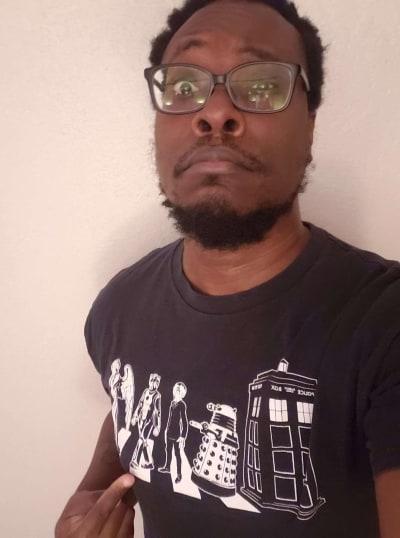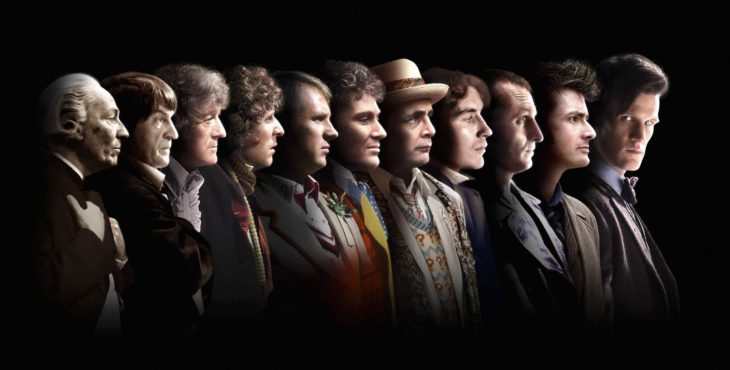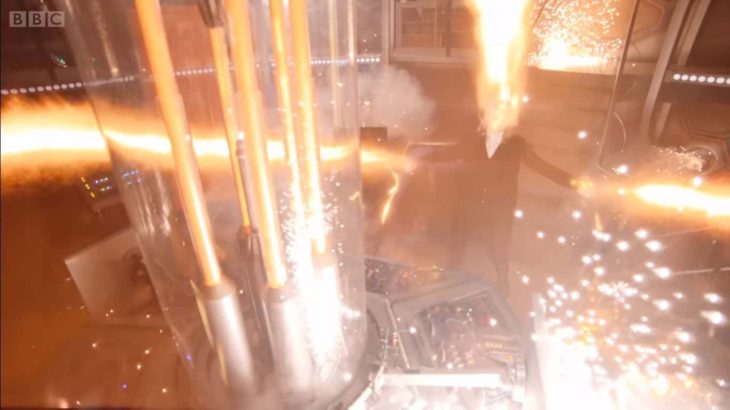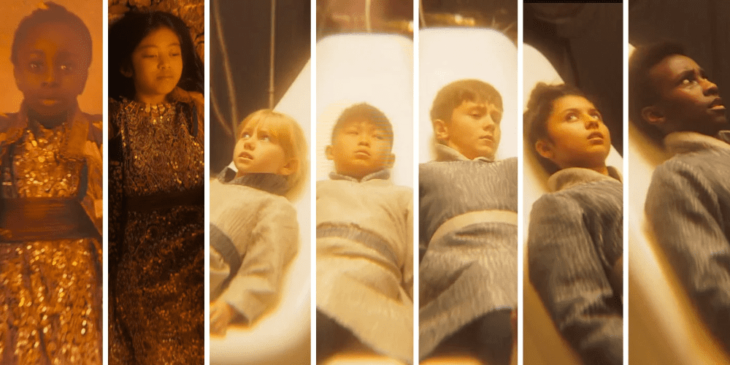The concept of regeneration is one of the most unique aspects of the Doctor Who television show and one of the main reasons it has endured for over half a century. In the series’ canon, each time the eponymous Time Lord is brought to the brink of death, whether through injury, illness, old age, or even by choice, they trigger a regeneration.
The Doctor’s innate ability is actually a process of “molecular readjustment,” as explained in the show, by which Time Lords, and a select few Gallifreyans, renewed themselves. The regeneration would cause a complete physical transformation and often a psychological change in the individual undergoing the regeneration process.
In this article, we’ll discuss the concept of regeneration in the Doctor Who television series, its rules, and how the rules of regeneration have changed over time.
What is Regeneration in Doctor Who?
The concept of Doctor Who regeneration was introduced very early in the series due to the deteriorating health of Willaim Hartnell, the actor portraying the First Doctor, in 1963. The show was a massive success, and BBC didn’t want to end it, but Hartnell’s deteriorating health made him more and more difficult to work with.
So, in 1966, the production team came up with the idea that the Doctor’s species, the Gallifreyans, had discovered the biological process that allowed them to regenerate their bodies while transforming them physically and, often, mentally. At that time, the production of the final episode of the serial was concluded, and Hartnell agreed to leave the role after the very first regeneration scene in which his old body was famously “wearing a bit thin.”
He appeared in one more serial, where he “handed” the role to Patrick Troughton, the actor who portrayed the Second Doctor. Since it was already established that the Doctor is an alien, the character could die and return to a new body. Of course, the production team also suggested that this becomes a recurring element within the show that would allow the Doctor to transform from an older man to a younger one.
This process of “renewal” — as it was initially called — allowed for the convenient recasting of the role when necessary, and it granted each succeeding actor and writer the freedom to interpret the character differently, and as long as the Doctor isn’t cruel or cowardly, the show could go on. It wasn’t until the Doctor’s third incarnation in 1974 that the process was actually called “regeneration.”
The Workings of the Regeneration Process
When physically distressed, usually in moments of extreme trauma, Time Lords would release a massive amount of lindos, a hormone that would trigger a regeneration. The increased levels of lindos would shortly linger in the Time Lord’s body following the regeneration, which is one of the ways to identify a newly regenerated Time Lord.
During the regeneration process, a Time Lord would experience a surge of regeneration energy, which would rewrite their biodata within all relative dimensions in space-time. It would repair any damage done to their bodies and fully regenerate them to youthfulness (at least at the beginning of the show) and good health.
The Rules of Regeneration in Doctor Who TV Series
It’s important to note that the origins of the regeneration within the canon weren’t well-established in the original run. There was a general lack of consensus on whether the regenerations were a natural process developed through evolution or a process developed through genetic engineering.
One account held that Rassilon, one of the founders of the Time Lord civilization, researched the methods of regenerating decayed and diseased tissue of living organisms through a series of self-replicating molecules. Other accounts suggest that he gained this ability as a side effect of working with the Eye of Harmony.
Regardless of how it came to be, numerous accounts actually mention Rassilon as the first Time Lord that underwent such a process, which was, for one reason or another, limited to 12 regenerations — regarded as the regeneration cycle. One account states that this was the ability’s natural limit, while others state that the limit was imposed since Rassilon believed that the mind couldn’t handle the multiplicity of psyche’s.
The regeneration cycle was first used as a rule in the Fourth Doctor story The Deadly Assassin, which aired in 1976. It was stated that Time Lords are given one regenerative cycle each, meaning they can regenerate 12 times. This also meant that they’d truly die, once and for all, after their 13th incarnation.
How the Rules of Regeneration Have Changed
Doctor Who television show has decades of lore, which means that the Doctor has regenerated quite a few times over the series’ 60-year run. Different actors interpreted the role differently, and each showrunner and writer put their own twist on the narrative. And when that happens, continuity within the show becomes a problem.
This is certainly the case with the regeneration process and its rules. Due to the show’s history and the fact that an increasing number of showrunners gradually retconned its canon, the particularities of this process were constructed and then reconstructed to better serve the narrative several times over.
Physical Transformation
In the early days of the show, following the first regeneration, it was suggested that the process implies only superficial physical transformation without affecting the Doctor’s personality. It was also implied that the Doctor would regenerate into a younger male, suggesting that the transformation always rejuvenated the Doctor and gave us the perceived rule that the Doctor would always regenerate into a man.
However, by the time Patrick Troughton’s Second Doctor underwent a regeneration into Jon Pertwee’s Third Doctor, it became apparent that the Doctor could regenerate into a form that’s apparently older than the previous one. This also happened in the new run of the series, when Matt Smith’s Eleventh Doctor regenerated into Peter Capaldi’s Twelfth Doctor.
Since there was no lifespan set for individual life, even-aged incarnations could live for a very long time, sometimes even centuries. But even if an incarnation would avoid injury and illness, each incarnation would eventually wither and die from old age, much like the First and War Doctor did. So, despite their natural longevity, a Time Lord would eventually reach the ultimate limit of their incarnation’s lifespan.
Mental Change
But the rule regarding physical appearance wasn’t the only thing that changed. The Second Doctor’s regeneration into the Third Doctor also affected the Doctor’s personality, and we ended up having a more dashing and action-oriented Doctor — which was actually influenced by James Bond films of the time.
In fact, the Time Lord regeneration is so traumatic that the Tenth Doctor, portrayed by David Tennant, even stated that the process was incredibly painful and mortifying. It’s so traumatic that the Time Lord might be prone to erratic behavior. The Tenth Doctor’s regeneration had him incapacitated for hours, the Sixth Doctor became paranoid, and both Twelfth and Eighth Doctor’s regeneration caused them to suffer bouts of amnesia.
In all cases, there was a massive physical change and a substantial difference in personality between these incarnations. So, not only did their physical appearance change, their personality did too, and mostly due to the previous incarnation’s emotional trauma. The Ninth Doctor was distant because he lost everyone during his previous incarnation.
Regeneration Cycle
This also suggests that Time Lords don’t have any control over the outcome of the regeneration, nor that the process is, in fact, voluntary. But where most regenerations were triggered by old age and fatal injury, the Second Doctor suffered a forced regeneration into the Third and was sent to Earth. On a separate occasion, the Master outright refused to regenerate just to spite the Doctor.
Moreover, Lady Romana in Destiny of the Daleks has shown the ability to trigger regenerations intentionally until she was satisfied with the result. This proves to be a point of contention since regenerations are limited, and spending all 12 of them would ultimately mean regenerating into a thirteenth and final body and eventually dying in their final incarnation.
But that isn’t the case. The ruling Time Lord authorities have the power to grant brand new regeneration cycles and new bodies to other Time Lords if they so choose, which is what has happened to the Master. Since it was apparent that the eponymous hero was nearing his, or in this case, her’s, thirteenth incarnation, the showrunners had actually granted the Eleventh Doctor a new regeneration cycle since he had previously spent all of his regeneration energy.
This not only allowed the Eleventh Doctor to regenerate into Twelfth, but it eventually led to the Thirteenth Doctor, portrayed by Jodie Whittaker. In fact, this broke the previously perceived rule that the Doctor would always regenerate into a man. However, at this point, the showrunners decided to take the regeneration rules and throw them out the proverbial window.
The Timeless Child
Season 12 of the new Doctor Who television show only made the regeneration more complicated. It turns out that the Doctor wasn’t Gallifreyan but that he was adopted by a Gallifreyan explorer named Tecteun, who found the Doctor as a child with regenerative capabilities.
After studying the child, Tecteun eventually found a way to incorporate the ability into Time Lord DNA, who had opted to cap the number of regenerations for all Time Lords at 12. With that said, the experimentation sequence showed one regeneration scene after another, suggesting that the child has the ability to regenerate more than 12 times.
Season 12 also introduced the Fugitive Doctor, who would either be the past or the future incarnation of the Doctor. Though this incarnation isn’t officially placed, fans are led to believe that the Fugitive Doctor, who worked for the Division, was one of the previous incarnations.
This was somewhat confirmed in Season 13 when Jodie Whittaker’s Thirteenth Doctor learns that she was previously working for the Division. In fact, the Fugitive Doctor was also female and of Afro-Caribbean descent — the first non-white person to play the role of the Doctor. Season 13 also saw the Doctor face Tecteun, who confirmed that the Doctor is, in fact, a Timeless Child.
This implies that the Doctor, as an entity, comes from an unknown species that has the ability to regenerate. The child’s memories were wiped using Gallifreyan technology, and all records of the experiments and the Doctor’s origins were heavily redacted from the pages of history to preserve Gallifrey’s noble creation myth.
So, for all we know, the child underwent an untold number of regenerations before it even became a Time Lord and the First Doctor — which implies that the First Doctor isn’t canonically the first. The full extent of the Doctor’s ability to regenerate isn’t actually disclosed, and for all intents and purposes, the Doctor is now immortal.
Infinite Regenerations?
Whether the Doctor has an unlimited number of regenerations or that number was never actually reached is currently unknown, but the introduction of the Timeless Child retconned everything we knew about the Doctor’s regenerations. Was he always able to regenerate indefinitely? If so, was it necessary for the Time Lords to grant him another cycle? Or was the regeneration limit genetically imposed on him/her as well?
The Timeless Child is one of the most severe retcons of Doctor Who continuity, and regardless of how much the fandom dislikes it, the story will continue past the 13th season. BBC likely has a long-term plan, and they wouldn’t have let the showrunners implement that retcon without offering a satisfying conclusion in the future.
This brings the following question…
Can We Expect Any Future Changes to the Rules?
Well, there’s no telling where the narrative would take us next, and as stated above, all retcons are approved by the network broadcasting the Doctor Who television show. In the final moments of Season 13, we’ve seen Jodie Whittaker’s Thirteenth Doctor holding a fob watch retrieved from Tecteun, which contains all her lost memories.
With the upcoming Season 14, we’ll see yet another regeneration scene, in which Jodie Whittaker’s Thirteenth Doctor regenerates into Ncuti Gatwa’s Fourteenth Doctor. Maybe he’ll be the one to open the fob watch and learn the secrets of the Doctor’s past and how many regenerations the Doctor had before we officially met William Hartnell as the First Doctor.
The Doctor Who Regeneration Quiz
During a Difficult Regeneration What Room Aboard the TARDIS Was Used to Help Ease the Process?
What were the Last Words of the 10th Doctor when He Regenerated in 'The End of Time'?
During the Master's Regeneration in Utopia What Sound Did He Make To Leave Viewers Distraught and Wincing?
During a Pitched Post Regenerative Battle with the Sycorax in the Episode Entitled 'The Christmas Invasion,' What Appendage Did the Doctor End Up Having to Regrow?
When Romana was "Trying on" Regenerations that Suited Her What Royal Likeness Did She Finally Settle On?

Contributing Writer, BuddyTV
Jason Collins is a freelance Pop Culture Journalist with a degree in English Literature. While he has had the distinct privilege of seeing Tom Baker up close he was not offered any Jelly Babies which was highly disappointing. When he’s not out on the hunt for the latest and greatest podcast he is lounging at home with more cats than he would care to disclose at this temporal moment.



![After Movies In Order [How to Watch the Film Series]](https://www.buddytv.com/wp-content/uploads/2022/09/After-Movies-In-Order.jpg)

![Divergent Movies in Order [How to Watch the Series]](https://www.buddytv.com/wp-content/uploads/2022/09/Divergent-Movies-in-order.jpg)

